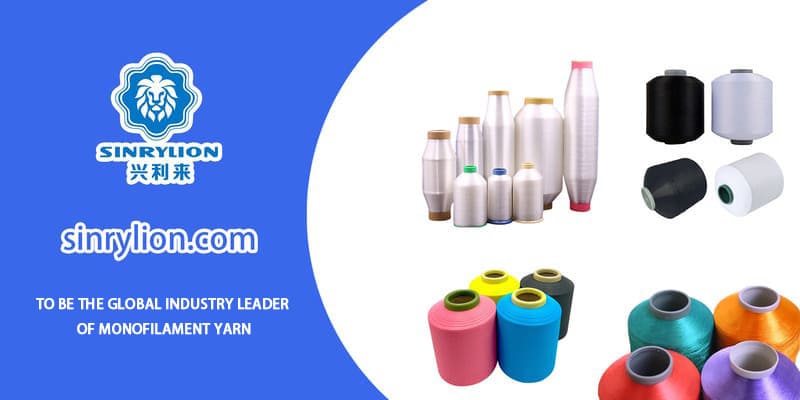How Can a Professional Polyester Twisted Yarn Manufacturer Ensure the Stability of Logistics and Transportation?
2025-07-01
In the polyester twisted yarn manufacturing industry, "logistics" is by no means an appendage of the production process, but a key link in the customer experience. From customer orders to final delivery, delays in each link may affect customers' overall evaluation of the company. Especially in a market environment with tight delivery dates and volatile freight environments, the stability of logistics and transportation directly affects whether the company can fulfill its contracts on time, maintain cooperative relationships, and even affect brand reputation and customer repurchase rate.
In reality, due to uncertain factors such as weather, transportation, customs clearance, regional epidemics or port congestion, logistics often encounter unpredictable problems. In this regard, polyester twisted yarn manufacturers with real professional strength will set up defenses at every node of the supply chain, establish standardized processes and risk response mechanisms, and ensure that delivery is controllable, transparent and reliable.
This guide will systematically analyze how manufacturers can build an efficient and stable logistics system from the aspects of supply chain layout, warehousing management, transportation strategy and customer communication, and provide practical suggestions that can be implemented to help companies optimize delivery processes and enhance customer trust.
Scientific supply chain planning - from raw material procurement to finished product delivery
- ● Multiple channels to ensure stable supply of raw materials:The stable production of polyester twisted yarn depends on the continuous supply of raw materials such as polyester chips, filaments, and oils. In order to reduce the risk of supply chain disruption, manufacturers usually establish multiple supplier systems in different regions. For example, some manufacturers will establish raw material cooperation channels in East China and South China to deal with local supply interruptions, transportation restrictions, etc.
-
- ● Synchronous scheduling of production rhythm and logistics cycle:In an environment with intensive orders and tight delivery deadlines, production plans should not be formulated separately, but the logistics cycle should be considered simultaneously. Manufacturers usually set up a "production-quality inspection-warehouse-delivery" linkage process, and each link should have a preset duration and floating flexibility, especially for orders sent to overseas customers, which require additional calculations of sea shipping time, destination customs clearance procedures, etc., and advance planning to avoid delays caused by insufficient time estimation.
-
- ● Use data analysis to optimize planning management:Although most small and medium-sized enterprises do not have the ability to deploy large-scale systems, they can still establish internal production scheduling and transportation models through daily data records, such as order cycles, customer order frequency, peak season rhythm, etc. By accumulating experience data, managers can more accurately grasp when to prepare in advance and when to combine shipments, thereby reducing inventory pressure while ensuring response speed.
Advanced inventory and warehouse management systems ensure smooth material flow
- ● Refined warehouse management improves logistics efficiency
- With the increase in order complexity, traditional manual warehouse management methods have been difficult to cope with the shipment needs of multiple batches, multiple specifications, and multiple customers. Professional manufacturers generally use electronic inventory management systems. Even if they do not deploy large-scale WMS systems, they have at least realized functions such as in-and-out warehouse scanning, warehouse location classification, and batch traceability.
- This refined management can not only avoid wrong shipments and missed shipments, but also grasp inventory dynamics in real time, providing a basis for transportation arrangements.
-
- ● Set up regional transit warehouses to shorten transportation routes
- For areas where customers are concentrated, manufacturers can consider establishing regional distribution points or transit warehouses. For example, a manufacturer stores some twisted yarn products in a transit warehouse in the South China region, which is then uniformly distributed to customers in the Pearl River Delta, greatly reducing transportation time and long-distance risks. This "close to the market" storage layout can not only improve response speed, but also enhance customer satisfaction.
-
- ● Establish a safety stock mechanism to deal with sudden orders
- Setting up a reasonable safety stock to counter temporary order fluctuations is an effective means to ensure stable delivery. Manufacturers can formulate inventory strategies based on A/B/C customer classification: for high-frequency customers or strategic partners, a certain amount of conventional yarn inventory is retained. Once the customer places an order, it can be shipped quickly to avoid shipment delays caused by emergency production.
-

Choose a reliable transportation partner and optimize transportation routes
- ● Cooperate with experienced logistics service providers
- The stability of transportation depends largely on the professional capabilities of logistics service providers. When choosing partners, manufacturers should give priority to their industry experience, vehicle scheduling capabilities, response speed and emergency handling mechanisms, rather than simply looking at prices.
- For example, some professional logistics companies provide customized industrial product transportation solutions, and can provide corresponding reinforcement measures according to product characteristics (such as moisture-proof and pressure-proof packaging requirements for packaged twisted yarn) to avoid damage during transportation.
-
- ● Reasonable route planning reduces transportation time fluctuations
- The optimization of logistics routes is not only an efficiency issue, but also a guarantee of stability. When arranging shipments, manufacturers need to comprehensively consider factors such as peak traffic hours, restricted areas, and cross-provincial transportation control, and formulate detour routes or adjust delivery times in advance to improve punctuality.
- In addition, it is recommended to establish a transportation map archive to record the actual delivery time and special circumstances (such as holiday congestion) in different customer areas as a reference for future production and shipment scheduling.
-
- ● Flexible combination of multi-mode transportation
- For different regions and different order urgency, manufacturers can adopt flexible combinations such as "trunk + branch line", "whole vehicle + carpooling", and "land transportation + air transportation". For example, regular orders are transported by whole vehicle to reduce costs, and urgent orders are arranged in small batches of special vehicles or entrusted express channels to ensure priority arrival.
- This method is particularly suitable for export business. Some customers' countries have shipping time fluctuations. Reasonable combination of air and sea transportation can effectively reduce the risk of default.

Real-time communication mechanism and risk management to improve logistics transparency and response speed
- ● Fully visualized logistics tracking system
- By connecting with the data interface of logistics service providers, manufacturers can achieve full tracking of orders, including key node status such as outbound, in transit, and receipt. Some companies will also provide tracking links directly to customers, and customers can check the transportation progress independently to reduce misunderstandings caused by repeated inquiries and information asymmetry.
- Even without a complex system, a manual schedule or regular return visit mechanism can be established to keep customer information synchronized and transparent.
-
- ● Establish emergency plans to improve emergency response capabilities
- In the face of emergencies such as natural disasters, traffic accidents, and epidemic control, it is very important to formulate emergency plans in advance. Common strategies include: arranging spare vehicles, retaining spare inventory, switching logistics channels, and actively communicating and explaining to delayed customers. A well-organized emergency system can greatly reduce the impact of unexpected events on delivery.
-
- ● Internal communication mechanism for efficient collaboration
- Logistics is not just the business of the "shipping department", but the result of the coordinated operations of multiple departments such as sales, production, customer service, and warehouses. Manufacturers should establish a cross-departmental information sharing mechanism. For example, once a customer requires early delivery, the sales department will inform the warehouse and logistics department as soon as possible to confirm the inventory status and shipping time to ensure internal consistency and efficient response.

Are you looking for affordable polyester twisted yarn? You have come to the right place. We are committed to providing our customers with quality products and the best value. Your satisfaction is our motivation. Send an email to janekwok@xll-group.com today and our manufacturer will be happy to serve you.
|
Contact Us |
Email: janekwok@xll-group.com |
Whatsapp: +86-15980572980 |
For polyester twisted yarn manufacturers, stable logistics is not only a guarantee of customer satisfaction, but also a reflection of the brand's long-term competitiveness. Especially today, when customers are increasingly strict with delivery requirements and the supply chain environment is becoming increasingly complex, having a stable, controllable, and efficient logistics system will be one of the core capabilities of manufacturers to break through the market.
To ensure every step of logistics, manufacturers need to have forward-looking supply chain awareness, solid internal management capabilities, and an extreme pursuit of details. Continuously optimizing processes, improving emergency mechanisms, and improving collaboration efficiency will help companies win greater initiative and long-term trust from customers in a volatile market.
 English
English 한국어
한국어 বাংলা ভাষার
বাংলা ভাষার हिन्दी
हिन्दी Türkçe
Türkçe русский
русский





